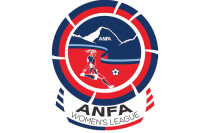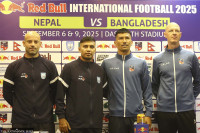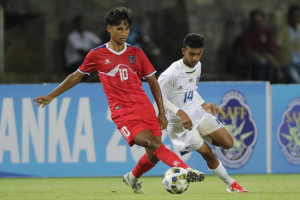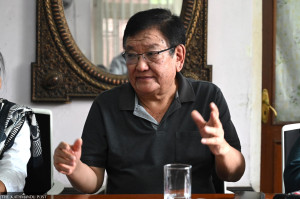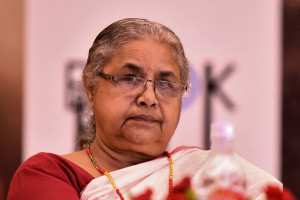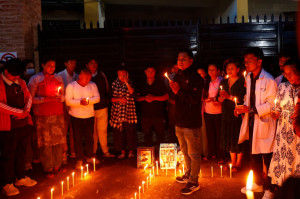Football
A journalist’s mission to record Nepali football’s golden past
Veteran football journalist Himesh’s debut book—‘Swarnakatha: Nepali Footballko’—is more than a tribute to the sport. It’s a wake-up call for authorities to step up record-keeping.
Nayak Paudel
Long before streaming links and floodlit stadiums, before national jerseys were stitched with sponsors’ names and hashtags, Nepali football lived in the cheers of local grounds, in grainy newspaper photos, and in the memory of those who were there. It’s easy to forget that the sport had its golden time—a period of pride, promise, and packed stadiumsーin the laps of the Himalayas.
Football remains one of Nepal’s most loved sports—but how it earned that place in the hearts of millions is a story few truly know. The early struggles, the defining matches, the players who became legends long before the word went viral—these stories risk being forgotten.
That’s what makes veteran football journalist Himesh Ratna Bajracharya’s forthcoming book ‘Swarnakatha: Nepali Football Ko’—literally, The Golden Stories of Nepali Football—so important: It reminds us that before we dream forward, we must look back.
Bajracharya, who goes by the mononym Himesh, has been covering Nepali football for well over two decades. His love for the game runs deep—“football runs through my veins,” he remarks.
It all began back in 2001. When he came across a vacancy for journalists issued by Kantipur daily, the Post’s sister newspaper, he applied for it without a second thought. Himesh was a student of commerce then. Sports journalism might have been an unlikely career choice for a student of commerce, but Bajracharya knew what he liked to do.
“When I applied, I clarified that I wanted to write about sports,” Himesh told the Post recently. “I was selected.” The rest, as they say, is history.
Whenever new faces enter football journalism, seniors advise them to read Himesh’s work to understand how the game should be reported.
A number of questions in Nepal’s footballing history remain unanswered as match statistics, player records, and tournament histories are either incomplete, scattered, or simply not maintained at all. This lack doesn’t just hinder coaches or analysts from making a more informed decision—it erodes the culture of the game itself.
How did the public gain access to football after the end of the Rana regime? How did teams, clubs, and the culture of the sport take shape in Nepal? Who were the key figures behind Nepali football in its early days? And why are those years a golden era?
‘Swarnakatha’ answers all of these. It’s evident that Himesh has spent years gathering them. In a country where basic records, such as playing elevens, goal scorers, or even the minute a goal was scored, are rarely preserved, compiling such details, especially from the 1970s and 1980s, is certainly a herculean task. Yet, through determined research and a journalist’s eye for history, Himesh has managed to safeguard stories and statistics that were at risk of disappearing altogether.
“Without data, fans cannot revisit great performances, young players cannot track their growth, and journalists cannot tell the full story,” Sitaram Agrahari, a retired senior sports journalist, told the Post over the phone recently. Agrahari, a former editor-in-chief for Gorkhapatra, Nepal’s oldest daily, said that every sport requires research for its development.
“Publication of a book completely dedicated to football is a welcome event,” said Agrahari, who is also the founding president of the Nepal Sports Journalists Forum (NSJF), referring to Himesh’s forthcoming title. “It is a great moment in the history of Nepali sports. I salute the journalist’s dedication.”
Throughout ‘Swarnakatha’, the reader is never far from the heartbeat of the game, whether on the football ground or among the players themselves. You’re never outside the sport; the book draws you fully into the world of Nepali football, and beyond.
Further, the book is not only important for Nepalis but also for football lovers across South Asia. Himesh has meticulously researched the football journeys of neighbouring countries—India, Bangladesh, Bhutan, Pakistan, Sri Lanka, and the Maldives—covering their national teams to club-level competitions. These nations played alongside Nepal in numerous tournaments before the 2000s. ‘Swarnakatha’ captures moments and stories that are scattered, undocumented, or simply unavailable online—until now.
The book’s careful preservation of Nepali football’s past serves as a wake-up call as, even today, Nepal struggles with poor record-keeping and a lack of accessible match archives.
The All Nepal Football Association (ANFA) rarely compiles or shares detailed statistics, which are crucial not only for coaches analysing performance but also for fans who crave data to deepen their understanding of the game.
Abhinav Joshi, an emerging football commentator, laments the lack of proper record-keeping about the game in the country.
“In a footballing world where stats, replays, and historical references fuel debates and deepen engagement, Nepal’s blank pages leave supporters with little to hold on to,” Joshi said. “The result is a fading connection to the sport’s legacy, and a present that feels increasingly detached from the passion and pride of the past.”
But now, it looks like things are beginning to change. When the Post spoke to Nepal’s new head coach Matt Ross during a press conference before the team’s trip to Singapore and Malaysia in March, he was glued to his tablet—an unfamiliar sight in the context of Nepali football. “I’ve been keeping track of my players and the opponents,” he had told the Post then. “There is a shortage of well-managed data on our players,” Ross added. “Now, I am keeping a proper record. Without enough data, it is difficult to analyse improvements and other factors in the players.”
In the 2012 UEFA Champions League final, Chelsea’s Petr Čech saved a crucial penalty from Bayern Munich’s Arjen Robben and went on to become the hero of the shootout. After the match, Čech revealed that he had studied a DVD archive of every Bayern penalty taken since 2007. It was a reminder that data in football isn’t just about numbers—it’s about preparation, strategy, and gaining a winning edge.
Ajay Phuyal, another senior sports journalist and a former president of NSJF, said the official record of Nepali football only starts around 1982. “And even that is incomplete and often informal,” he said. “Most of what we know came from the first generation of players and coaches, passed down by word of mouth. But those people are disappearing.”
Phuyal believes that Himesh’s book has now opened the doors for further research in football and sports as a whole in the country. “So much has already been lost from living memory,” Phuyal lamented. “Preserving what we still can should be a priority.”
Phuyal added that kheladi.com, an online sports media outlet that he edits, has also taken a step in the same direction. The outlet recently launched a weekly column dedicated to chronicling the lives and careers of former players and coaches—an effort to document and preserve stories that might otherwise be forgotten. The series began on Sunday with a profile of former national football coach Padam Krishna Shrestha.
Himesh said he hopes the new generation will continue what he has started and the authorities also step up, keeping records safe, accessible, and detailed.
“Football is nothing without data and history,” he said. “Those things make the game more beautiful.”
‘Swarnakatha: Nepali Football Ko’, published by BookHill Publications, will hit the shelves on May 31.




 26.12°C Kathmandu
26.12°C Kathmandu


